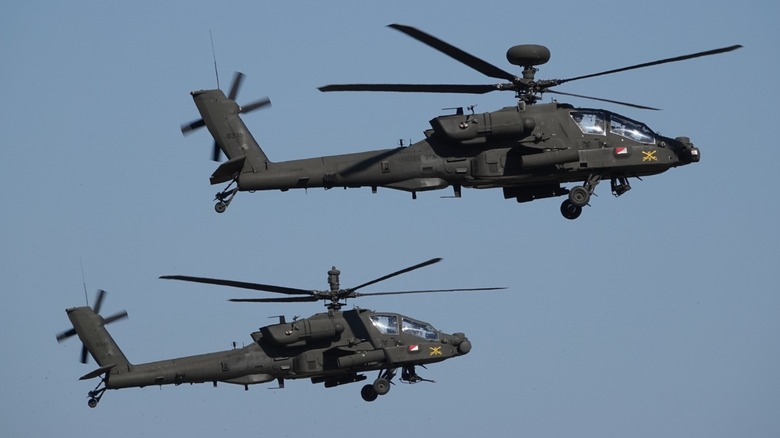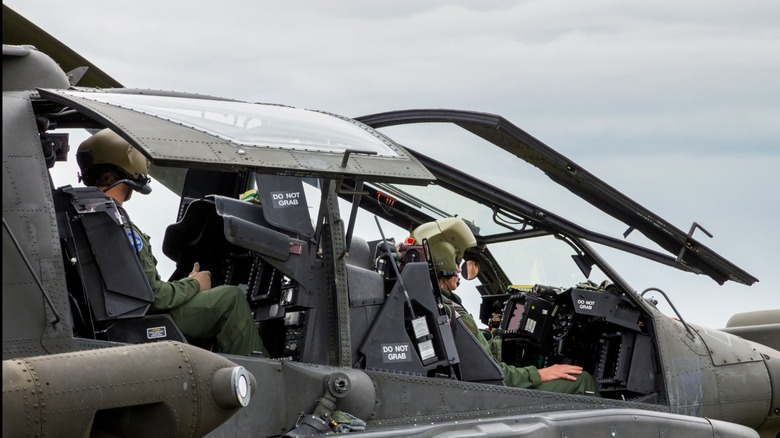Why The Apache's Capabilities Also Make It One Of The Hardest Military Helicopters To Fly
The Apache is one of the most feared attack helicopters out there, with the U.S. Army operating over 800 of them. This chopper entered service in 1984, making it over 40 years old. Despite being labelled as a replacement for the AH-1 Cobra, both attack helicopters are still being used by the United States military. The newer is Apache is preferred by the Army, while the Marines still fly the AH-1Z Viper, the latest iteration of the AH-1.
Both of these choppers have pretty impressive capabilities, but those features also mean that pilots have more things to consider when getting in the cockpit. The AH-64 Apache, in particular, is often considered to be one of the hardest military helicopters to fly. This is in part because pilots have their hands and feet doing four different things at once, and even their eyes have to move in different directions to keep track of all of the signals and messages appearing on the helicopter's screens while maintaining focus on the sky in front of them.
Flying any kind of chopper is already quite difficult because, unlike fixed-wing aircraft, you don't have a consistent forward motion that helps stabilize the helicopter in the air. To get the chopper moving and stabilized, you've got to adjust the cyclic pitch control, collective pitch control, and tail rotor pedals simultaneously. Even the unassuming Robinson R22 is quite a difficult helicopter to fly because of this challenging balancing act. The AH-64 Apache, with its plethora of controls, sensors, and weapons, is sometimes considered even more complicated.
The AH-64 Apache's numerous sensors can overwhelm a new pilot
Because the AH-64 is designed to take out tanks and other ground targets, it has several sensors, radar, and cameras to help pilots identify targets. In his book, "Apache: Inside the Cockpit of the World's Most Deadly Fighting Machine," former British Army Air Corps pilot Ed Macy explained that Apache pilots have a monocle covering their right eye with a screen showing readings from all of these different systems. Meanwhile, the left eye is responsible for monitoring the Apache's external environment. When Macy recorded himself while flying the helicopter, he saw that his eyes were moving independently from one another "like a man possessed."
Learning how to manage all of these controls takes considerable training. Macy, who was already a fully trained army combat pilot, still had to spend six months flying the machine to get the hang of it, another half of a year performing combat training in it, and an additional six months of clocking in hours in the Apache to be ready for combat. Prior to being trained on an AH-64, you must have already been approved as a combat pilot, which can itself add years to the process. The U.S. Army's training is a bit shorter, but you'll still spend a minimum of 18 months learning how to fly the chopper if you're starting as a civilian with no experience. It's also not a guarantee that you'll pass this intensive training, as you have to prove yourself capable of operating one of the deadliest aircraft in the military's inventory.

